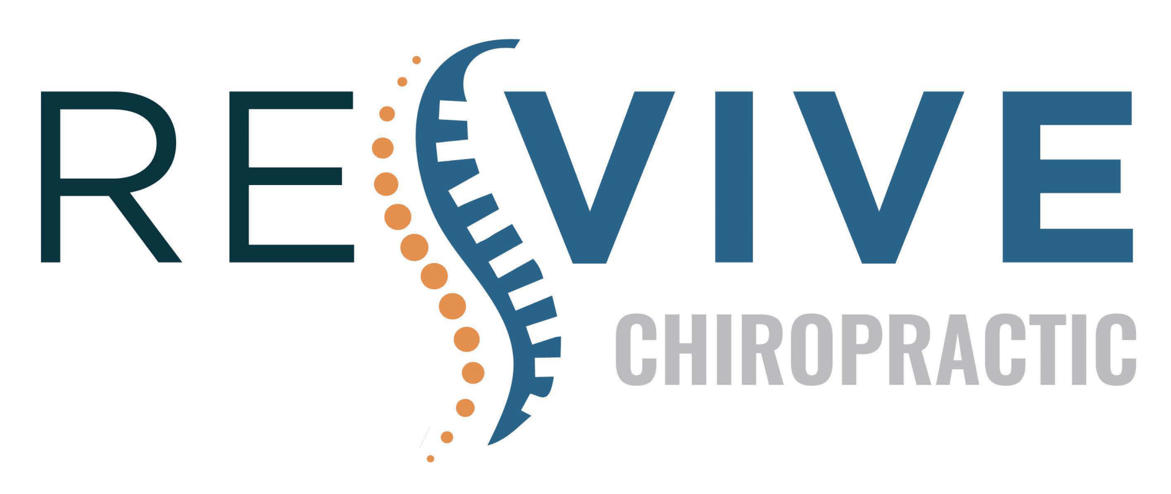If you've ever experienced chronic tension headaches, you know how debilitating they can be. Chiropractors offer a range of effective techniques to alleviate this discomfort, from spinal adjustments to soft tissue therapy. They also address your posture and provide lifestyle counseling to help manage stress. But what specific methods can truly make a difference in your day-to-day life? Understanding these approaches might just be the key to finding relief you've been searching for. Let's explore how these strategies work and what you can expect from a chiropractic visit.
Spinal Adjustments
Spinal adjustments play an essential role in alleviating chronic tension headaches. When you experience these headaches, it often stems from muscle tension and misalignments in your spine. A chiropractor can help by performing adjustments that realign your vertebrae, taking pressure off your nerves and muscles. This realignment promotes better blood flow and reduces tension in the neck and upper back, which are common areas for headache triggers.
During your visit, your chiropractor will assess your spine and identify any misalignments. By applying precise force in specific areas, they can restore your spine's natural curvature. This process not only helps relieve existing headaches but also prevents future occurrences by addressing the underlying issues. You'll likely feel immediate relief after an adjustment, as your body begins to respond positively to the changes.
Furthermore, spinal adjustments can improve your overall function and mobility. When your spine is aligned, your nervous system can communicate more effectively with the rest of your body. This improved communication can reduce stress and anxiety, which are often contributors to chronic tension headaches.
Incorporating regular spinal adjustments into your wellness routine may help you manage and reduce the frequency of your headaches. By addressing the root causes instead of just masking the symptoms, you're taking proactive steps toward a healthier, headache-free life.
If you're struggling with chronic tension headaches, consider consulting a chiropractor to explore how spinal adjustments can work for you.
Soft Tissue Therapy
Soft tissue therapy offers a powerful approach to managing chronic tension headaches by targeting the muscles, fascia, and connective tissues that contribute to pain and discomfort. When you experience these headaches, it's often due to tight or overworked muscles in your neck, shoulders, and upper back.
Soft tissue therapy aims to relieve that tension, allowing for improved circulation and reduced pain.
During your sessions, your chiropractor may use techniques like massage, myofascial release, or trigger point therapy. These approaches focus on breaking up knots and reducing muscle tightness, which can provide you with immediate relief.
By applying pressure to specific areas, your chiropractor helps release built-up tension, allowing your muscles to relax and function better.
You'll likely notice a difference not only in your headache frequency but also in your overall well-being. Soft tissue therapy can enhance your flexibility and mobility, making daily activities easier and more enjoyable.
Additionally, the relaxation you experience during these sessions can help reduce stress, which often plays a vital role in headache development.
To get the best results, it's important to communicate openly with your chiropractor about your pain levels and any areas that feel particularly tight. They can tailor the therapy to your specific needs, ensuring you receive the most effective treatment possible.
Posture Correction
If you often find yourself hunched over a desk or glued to your phone, your posture might be contributing to those nagging tension headaches. Poor posture puts unnecessary strain on your neck and shoulders, leading to muscle tension that can trigger headaches. Chiropractors can help you correct your posture, diminishing this strain and providing relief.
During your initial evaluation, a chiropractor will assess your posture to identify any imbalances or misalignments. They'll look for issues like rounded shoulders or a forward head position, both of which can create tension in your upper body.
Once they've pinpointed the problems, they'll develop a personalized treatment plan that may include spinal adjustments, stretches, and exercises aimed at improving your posture.
Chiropractic adjustments can realign your spine and relieve pressure on the muscles surrounding it. This realignment can lead to better overall posture and lessen the likelihood of tension headaches.
Additionally, chiropractors often teach you specific exercises to strengthen your core and back muscles, which support proper alignment.
It's also essential to incorporate posture awareness into your daily routine. When sitting, keep your feet flat on the floor and your back against the chair. If you're using a computer, verify your screen is at eye level to avoid straining your neck.
Lifestyle Counseling
Improving your posture is just one piece of the puzzle when it comes to managing chronic tension headaches. Lifestyle counseling plays a key role in addressing the underlying factors that contribute to your headaches. By examining your daily habits and routines, you can pinpoint stressors that may exacerbate your condition.
First, consider your work environment. Are you sitting for long periods without breaks? If so, it's important to integrate regular pauses into your day. These breaks can help relieve tension building in your neck and shoulders. Your chiropractor can offer specific recommendations tailored to your workspace, ensuring you maintain an ergonomic setup.
Next, evaluate your sleep habits. Poor sleep quality can lead to muscle tension and increased headache frequency. Establishing a consistent sleep schedule and creating a calming bedtime routine can help improve your overall rest. Your chiropractor may suggest techniques for relaxation, such as deep breathing or meditation, to enhance your sleep quality.
Additionally, pay attention to your hydration and nutrition. Dehydration and poor dietary choices can trigger headaches. Make it a point to drink plenty of water throughout the day and consume a balanced diet rich in fruits, vegetables, and whole grains.
Lastly, managing stress is essential. Engaging in activities that bring you joy and relaxation can greatly reduce tension. Whether it's spending time with loved ones or pursuing hobbies, make time for yourself.
Stretching Exercises
Incorporating stretching exercises into your daily routine can make a significant difference in managing chronic tension headaches. These exercises help relieve muscle tension, improve flexibility, and enhance blood flow, all of which can alleviate headache symptoms.
Start by focusing on the neck and shoulder areas, as these are often the culprits behind tension headaches. Try gentle neck stretches: slowly tilt your head to one side, holding for 15-30 seconds, then switch to the other side. You can also do shoulder rolls; lift your shoulders towards your ears, then roll them back and down. Repeat this several times to release tightness.
Another effective stretch is the upper back stretch. Sit or stand with your feet shoulder-width apart. Interlace your fingers and extend your arms in front of you, rounding your upper back. Hold this position for 15-30 seconds, feeling the stretch between your shoulder blades.
Incorporate these stretches into your morning routine or take breaks throughout the day to relieve tension. Aim for at least 5-10 minutes of stretching every day.
You might also consider adding some yoga poses, like the Cat-Cow stretch or Child's Pose, which can be particularly beneficial for tension relief.
Nutritional Guidance
While managing chronic tension headaches, paying attention to your nutrition can play an important role in reducing their frequency and severity. What you eat directly affects your body's overall health, including headache triggers.
Start by identifying potential food sensitivities. Common culprits like dairy, gluten, and certain additives can contribute to tension headaches for some people. Keeping a food diary can help you pinpoint which foods might be problematic.
Hydration is also vital. Dehydration can lead to increased headache frequency and intensity. Aim to drink plenty of water throughout the day, and consider limiting caffeine and alcohol, as they can dehydrate you and might trigger headaches.
Incorporating anti-inflammatory foods into your diet can help as well. Foods rich in omega-3 fatty acids, such as fatty fish, walnuts, and flaxseeds, can reduce inflammation and may alleviate headache symptoms.
Don't forget about fruits and vegetables; they provide essential vitamins and minerals that support your overall health and can help mitigate headaches. Foods high in magnesium, like spinach, avocados, and bananas, can also be beneficial.
Lastly, maintaining regular meal times can prevent blood sugar fluctuations, which can lead to headaches. Make sure you're eating balanced meals that include protein, healthy fats, and complex carbohydrates.
Stress Management Techniques
Managing stress effectively is crucial for reducing the frequency and intensity of chronic tension headaches. By incorporating specific stress management techniques into your daily routine, you can empower yourself to tackle the stressors that contribute to your headaches.
First, practice deep breathing exercises. When you feel stress building, take a moment to breathe deeply. Inhale through your nose for a count of four, hold for four, and exhale through your mouth for six. This simple method can help calm your nervous system and reduce tension.
Next, consider adopting mindfulness or meditation practices. Taking just a few minutes each day to focus on the present moment can greatly decrease your stress levels. Apps and online resources can guide you through meditation techniques, making it easier to start.
Physical activity is another essential component. Whether you prefer a brisk walk, yoga, or dancing, moving your body releases endorphins that naturally combat stress. Aim for at least 30 minutes of exercise most days of the week.
Don't overlook the power of social connections. Reach out to friends or family when you're feeling overwhelmed. Sharing your feelings can lighten your emotional load and provide perspective.
Finally, prioritize sleep hygiene. A well-rested body is better equipped to handle stress. Create a calming bedtime routine, limit screen time before bed, and aim for 7-9 hours of quality sleep each night.
Trigger Point Therapy
Trigger point therapy can be a game changer for your chronic tension headaches.
By identifying specific trigger points in your muscles, you can target areas that contribute to your pain.
Let's explore some effective techniques to release those tight spots and ease your discomfort.
Identifying Trigger Points
Identifying trigger points is essential for relieving chronic tension headaches, as these tight knots in your muscles can lead to significant discomfort.
When you pinpoint these areas, you can better understand where your tension originates and how to address it effectively. Trigger points commonly develop in the neck, shoulders, and upper back, making it vital to pay attention to your body's signals.
To help you identify these trigger points, consider the following signs:
- Localized pain: You may feel discomfort in a specific area that doesn't seem to radiate.
- Muscle tightness: Notice if certain muscles feel tighter than others, especially after stress or prolonged sitting.
- Referred pain: Sometimes, pain in one area can manifest elsewhere, leading to headaches.
- Tenderness: Pressing on a knot may elicit tenderness or an increase in pain, indicating a trigger point.
Techniques for Release
When it comes to easing chronic tension headaches, employing effective techniques for releasing trigger points can make a significant difference. Trigger point therapy targets specific areas of muscle tension, helping to alleviate pain and restore balance. One of the most common methods is manual pressure. Your chiropractor will apply focused pressure to these tight knots, stimulating blood flow and promoting relaxation.
Another technique involves stretching. By gently stretching the affected muscles, you can help release tension and improve flexibility. Your chiropractor may guide you through specific stretches tailored to your needs, ensuring you're not just relieving pain but also preventing future headaches.
Additionally, using tools like foam rollers or massage balls can enhance your self-care routine. You can apply pressure to trigger points at home, making it easier to manage headaches between chiropractic visits.
Don't forget about heat therapy; applying heat can relax tight muscles and enhance blood flow, facilitating the release of trigger points.
Combining these techniques with regular chiropractic adjustments can provide lasting relief, empowering you to take control of your chronic tension headaches and improve your overall quality of life.
Ergonomic Assessments
Ergonomic assessments play an essential role in managing chronic tension headaches, as they help identify how your workspace and daily habits contribute to discomfort. By evaluating your posture, workstation setup, and daily routines, chiropractors can pinpoint specific areas that may be causing or exacerbating your headaches.
During an ergonomic assessment, you'll typically discuss your daily activities, work environment, and any physical strain you experience. Here are some key factors that may be evaluated:
- Chair height and support: Confirming your chair supports your lower back and is at the right height can reduce strain on your neck and shoulders.
- Monitor position: The top of your computer monitor should be at eye level to minimize neck strain.
- Keyboard and mouse placement: Keeping these tools within easy reach and at the right height can prevent awkward wrist and shoulder positions.
- Lighting: Proper lighting helps reduce eye strain, which can trigger headaches.
Once the assessment is complete, your chiropractor will provide recommendations tailored to your needs. This may include adjusting your workspace, implementing ergonomic tools, or suggesting posture changes.
Heat and Cold Therapy
When you're dealing with chronic tension headaches, heat and cold therapy can offer significant relief.
You can experience the soothing benefits of heat therapy, while cold therapy techniques help reduce inflammation and numb pain.
Combining both therapies might just be the key to alleviating your discomfort effectively.
Benefits of Heat Therapy
Among the various methods to alleviate chronic tension headaches, heat therapy stands out for its soothing effects. When you apply heat to your neck and shoulders, you can experience considerable relief from tension and discomfort. This simple yet effective approach works by relaxing tight muscles and increasing blood flow, which helps reduce pain.
Here are some key benefits of heat therapy for tension headaches:
- Muscle Relaxation: Heat helps loosen tight muscles, easing the tension that can lead to headaches.
- Improved Circulation: Increased blood flow nourishes the affected areas, promoting healing and comfort.
- Pain Relief: The warmth provides a calming sensation, which can considerably reduce headache pain.
- Stress Reduction: Heat therapy creates a comforting environment, helping you unwind and alleviate stress, a common headache trigger.
Whether you use a heating pad, warm towel, or take a hot shower, incorporating heat therapy into your routine can make a real difference.
It's an accessible and effective tool in your toolkit for managing chronic tension headaches, enhancing your overall well-being.
Cold Therapy Techniques
Using cold therapy techniques can be an effective way to combat chronic tension headaches. Cold therapy helps reduce inflammation and numbs the area, providing relief from pain. You can easily incorporate this method into your routine by using ice packs, cold compresses, or even a bag of frozen vegetables wrapped in a cloth.
When applying cold therapy, aim for sessions of 15 to 20 minutes, allowing your skin to return to normal temperature between applications. This prevents skin damage and enhances the effectiveness of the treatment. Focus on the areas where you feel tension or pain, such as your forehead, temples, or the back of your neck.
You might also consider a cold gel mask, which can conform to your face and provide targeted relief. Remember to avoid placing ice directly on your skin to prevent frostbite. Instead, use a towel or cloth as a barrier.
Incorporating cold therapy into your headache management plan can be a simple yet powerful tool. By addressing the discomfort at its source, you'll likely find yourself experiencing fewer headaches and better overall quality of life.
Combining Both Therapies
Combining heat and cold therapy can provide a powerful approach to managing chronic tension headaches. Each method has its own benefits, and using them together can enhance relief. You can effectively target headache pain and muscle tension by alternating between heat and cold treatments.
Here are some tips to maximize the benefits of both therapies:
- Start with cold therapy: Apply a cold pack for 15-20 minutes to reduce inflammation and numb the pain.
- Switch to heat therapy: After the cold treatment, use a warm compress or heating pad to relax tight muscles and improve blood circulation.
- Listen to your body: Pay attention to how your head and neck respond to each therapy, adjusting the duration and intensity as needed.
- Incorporate relaxation techniques: Pair heat and cold therapy with deep breathing or gentle stretches for even greater relief.
Conclusion
Incorporating chiropractic care into your routine can greatly ease chronic tension headaches. By utilizing spinal adjustments, soft tissue therapy, and proper posture correction, you can find relief and improve your overall well-being. Embracing lifestyle changes, stress management techniques, and ergonomic assessments will further support your journey to headache-free living. Remember to stay hydrated and consider heat and cold therapy for additional comfort. With these strategies, you're well on your way to conquering tension headaches for good.



